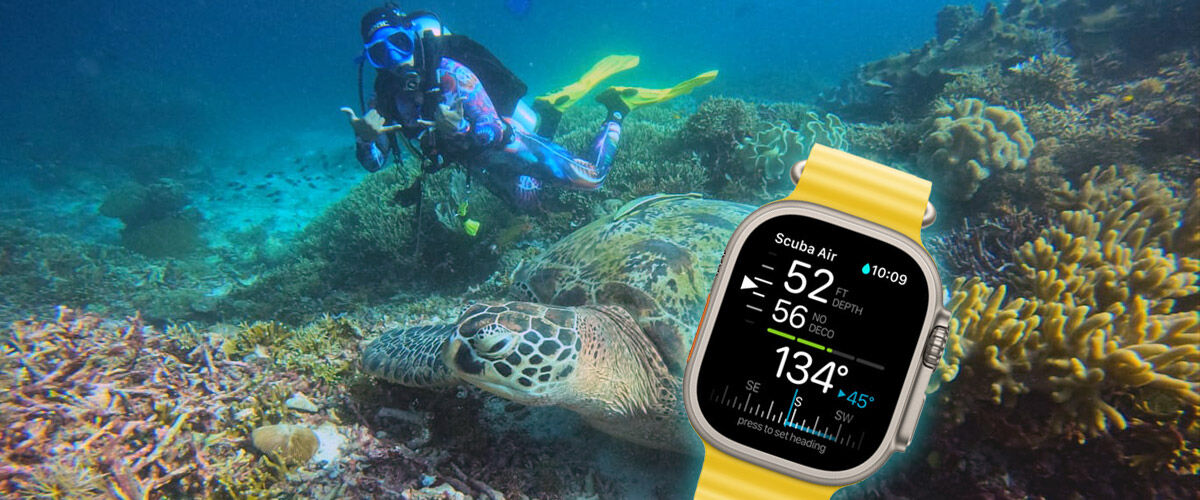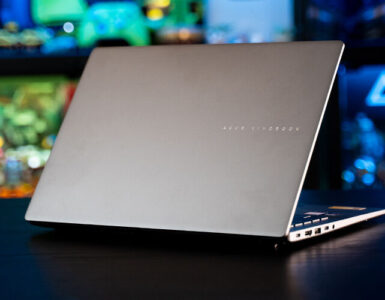The debut of Apple’s Watch Ultra last September also marked the biggest new feature introduced to the device since its debut in 2015 – diving. While not a mainstream sporting activity, like cycling or running, there are enough people active in the sport to get excited about the company’s new device catered towards extreme athletes, now with an app that can turn the device into a dive computer.
It was also a challenge to review because unlike long-distance running or cycling, which can be done by anyone with two feet and wheels, and enough time on their hands, diving requires a level of expertise, knowledge, experience, and investment. It’s not just a matter of simply heading to a beach – to satisfy their passion for diving, divers usually plan trips and holidays to popular spots and spend hours, or even days, out at sea. Even casual divers would continue to pick up on things along the way, and not only dive for fun but also look out for new experiences while out in the open sea.
And that’s why a dive computer is important, because diving puts physical pressure on your body, and divers need to know their No Decompression Limit (NDL), or No Stop Limit, which is the window of time divers may spend at a given depth without having to make any decompression pauses while surfacing. A dive computer serves as a measurement device underwater enthusiasts use to measure the diving activity, including the elapsed time and depth taken during a dive. Together with a decompression algorithm, this information is then used to calculate a safe ascent for the individual driver, to avoid the risk of decompression sickness.
Most dive computers measure ambient pressure, mixed with a decompression algorithm, to calculate the remaining time to the no-stop limit. If that limit is exceeded, the calculations measure the minimum decompression required for divers to surface with an acceptable risk of decompression sickness.
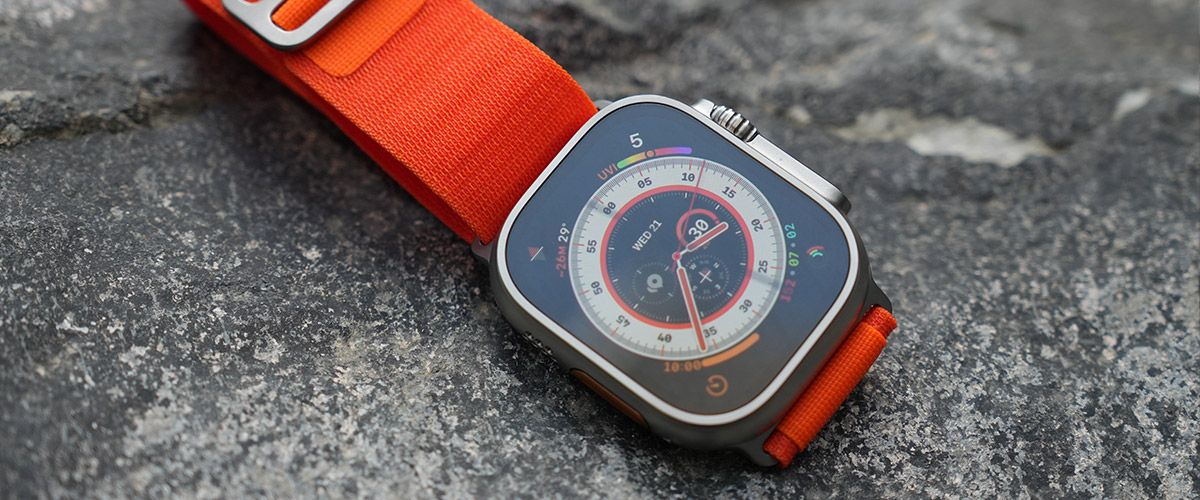
In that regard, the Apple Watch Ultra is simply the hardware, and the dive computer taps on the Oceanic+ app for the software. Oceanic is an American manufacturer of scuba gear and has spent the last 50 years developing and improving diving equipment, including dive computers. The Oceanic+ app monitors a diver’s depth, temperature, and time spent, and provides data that a diver needs, including NDL and dive time. This combo also comes with a heart rate monitor for divers, though this feature only works when the watch is in direct contact with the wrist, without a wetsuit.
To assist with the assessment of the Apple Watch Ultra as a dive computer, much like when we reviewed the surface use of the Watch Ultra with a triathlete, we enlisted the help of dive master Lim Dixun, who has been diving for over a decade and has spent the last two years as a dive professional. She has clocked over 150 dives in the last 10 years, including open-water expeditions in Malaysia, Indonesia, Thailand, the Philippines, the Maldives, Australia, and Singapore. If you want to know what we thought of the Apple Watch Ultra as an extreme fitness device sans the dive feature, you can read about it here.
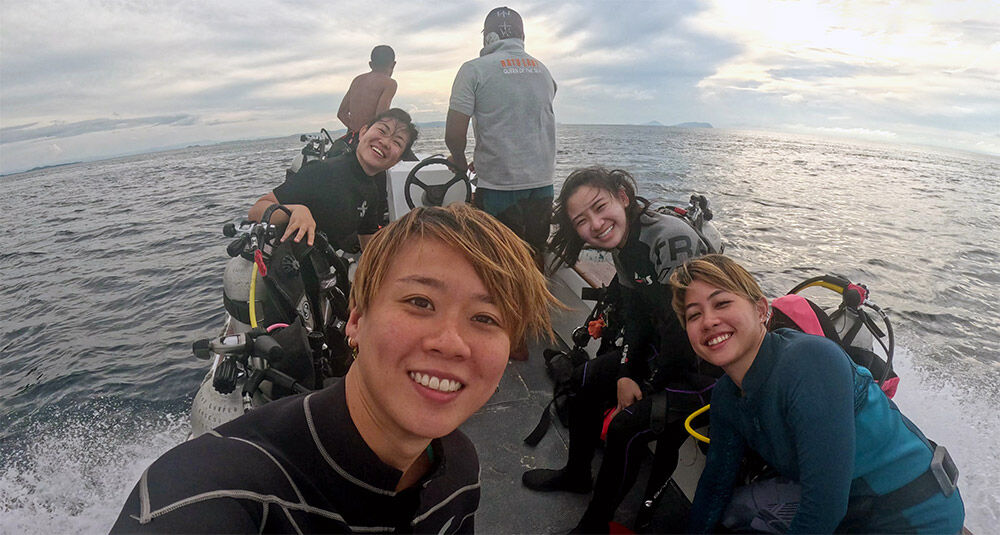
Together with a group of 11 fellow divers, the group went on a 10-day live-onboard dive trip to Raja Ampat anchored out at sea, moving around the area to explore different dive sites daily. Along with the Apple Watch Ultra, Dixun also used the Shearwater Teric and Garmin MK2 as companion devices, to measure how each of the three dive computers performed when measuring the necessary calculations needed to provide accurate readings for the diver.
The Shearwater Teric is a watch-sized dive computer from the Canadian manufacturer of dive computers and rebreather electronics for technical diving. The Garmin MK2 is a dive computer from one of the world’s leaders in wearable technology and activity trackers.
Given her breadth of experience, she does have a few recommendations for casual divers or those looking to pick up a dive computer. The first is familiarity with their dive computer, as most divers don’t normally do their first dive with one. Instead, it’s common practice to take initial dives with a more experienced individual who can guide and interpret the data on a computer, and once a novice is comfortable and able to understand the incoming data, that’s when the thought of investing in their own dive computer sets in.
And that familiarity applies to the Apple Watch Ultra. The Oceanic+ app is a subscription-based offering, and divers should get used to a dive computer and an Apple Watch, before relying on it as their primary device. As this was the first time Dixun took the Watch Ultra out for a dive, it took several tries for her to sync the Watch Ultra to her Apple iPhone 14, and that’s also due to the fact that there was a lack of data connectivity out at sea, which made the initial pairing more challenging. So configure the Watch, phone and Oceanic+ prior to your dive, before heading out to sea.
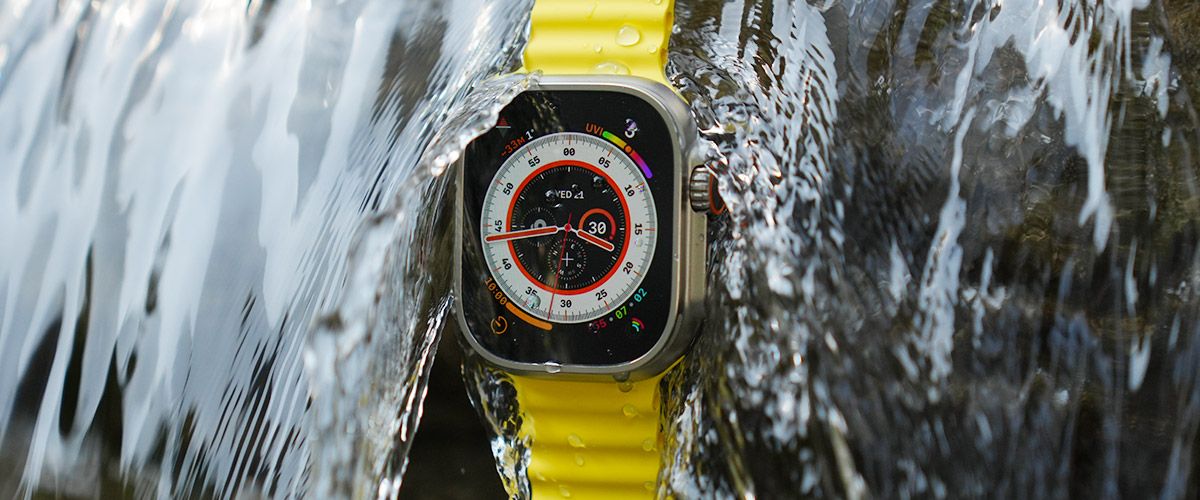
Out in the water, she strapped all three dive computers to her wrist and there were already some obvious differences from the get-go. Upon entering the water, the Apple Watch Ultra requires the user to click on a button to acknowledge the dive has started. This is an unnecessary step for most divers because not all dives occur in calm waters. In instances where there is a very strong current and the dive has to start on a negative entry, the diver might be too busy descending and fighting the currents or even panicking to remember to press the button. Most other dive computers she tested, such as Suunto, Shearwater and Garmin, will automatically start recording the dive once it hits the water.
While all three devices are roughly the same size, they stand out with a mix of offerings. The Teric offers customisable and personalised display settings, giving divers flexibility in the presentation of data, and making for quicker and easier readings of information. Meanwhile, the MK2s offers support for up to six types of gas mixes, providing a level of expertise more for technical diving, as the calculation of decompression limits also differs based on the different gas mix used.

As for the Watch Ultra, the display is the largest of the lot, with a bright display offering large text, which is great for normal viewing without the need to decipher too many details. That said, some divers do want to have all relevant and important dive information, including bottom time, depth, and no decompression limit, on hand, so it boils down to preference – if a crowded display or the friendly navigation and intuitive interface of the Watch Ultra is more important.
To ensure comfort while out at sea and in the water, divers should understand their devices and have tools that display information they understand. For example, dive computers should record and display information in both Imperial and Metric, as well as temperatures in Fahrenheit and Celcius. It’s not about changing the readings on the fly, but unless you own all your equipment, you never know if your rental gear during a dive can be reading BARS instead of PSI, so having a grasp of such details can help you interpret the data when you’re underwater.
A dive computer should also offer readings for a safety stop. This is where every diver knows to stop at around the five to six-metre or 15 to 20-feet mark for at least three minutes, to help the body release the built-up nitrogen absorbed while diving, and the Watch Ultra functions perfectly on this.

Activated between six to five metres underwater, this informs the diver to clear the three-minute counter at around five metres, but it might be a burden to those who have buoyancy troubles or if the dive master plans to end the dive at shallow depths to double up as a safety stop. For example, the Shearwater Teric activates safety stop above six metres, but will continue running until eight metres deep, which allows the diver to continue the dive at the shallow depth while clearing safety stop as planned.
Users should also consider having a compass reading on their dive computer, to reference underwater navigation and get their bearings for say, where their anchored boat is, or where a gathering point is. The compass between the Apple Watch Ultra, Shearwater Teric and Garmin MK2s all showed slightly different True-North readings, but the importance here is not the reading, but the reference point that it provides. GPS positioning doesn’t work underwater, but modern dive computers should be able to calculate the location of a dive’s entry and exit point, again as a reference.
Another peculiar set of information presented was the ascent rate, which the Watch Ultra gave in actual numbers. To most divers, however, that doesn’t mean much, as they are only concerned with whether they are ascending too quickly, so few will bother remembering the ideal ascent rate. Instead of a figure, the Garmin MK2s shows the ascent rate as colour zones, with a green zone for an ideal ascent rate, orange for slightly fast but still acceptable, and a red zone with alerts if the ascent is too fast. Yes, the Apple Watch Ultra does send out alerts when the ascent is too fast, but it would make sense to provide an early indication or warning before it gets too dangerous.

Overall, this first attempt by Apple is commendable, as it takes a lot of effort for lifestyle smartphone makers to enter into the dive scene. The folks at Oceanic+ have taken their expertise and placed their software on a layer of impressive hardware, and the combination of performance and hardware makes for an impressive device.
The one unique thing about the Watch Ulltra is that the dive feature requires a paid subscription, which might not make sense if the user is not a frequent diver. For casual divers who do so a handful of times a year, or just for a few days on holiday, the monthly subscription of S$9.99 is comparable to renting a dive computer. But for dive professionals, the annual subscription of S$79.99 adds up to about S$400 for five years, which is about the same price as a basic dive computer that has way better battery life than the Watch Ultra.
And battery life is where the Watch Ultra falters. The device was only able to last for about a day with four dives clocked, whereas the Garmin MK2s and Shearwater Teric can last at least three to four days, with four dives a day. A fourth device, the Sunnto D4i dive computer, was also brought along as Dixun’s fourth device, but it ran out of juice just before the dive, and could not be used as it required a complete battery replacement that can only be done at a service centre.
Diving for consecutive days on one battery charge is also a unique circumstance and though the Watch Ultra only lasted a day, it can still be charged at the end of the day without the need for an external battery source, which is a requirement for the Sunnto D4i.
For the next iteration, Apple might also want to look at air integration, where a diver’s air consumption and supply are monitored via a transmitter connected to the dive computer. It’s quickly becoming a standard feature with most dive computers out there, so the addition should prove handy for Apple Watch Ultra owners.
Ultimately, Apple’s foray into dive computers is not unlike its first steps into any of the hundreds of features introduced in its hardware, from music on the go, photography, video callings and more – you work with what you have in your pocket and on your wrist. The Oceanic+ app with the Apple Watch Ultra offers a fully functional dive computer with all the necessary safety features required for a worry-free and enjoyable dive. Displays are big and clear, and the interface is extremely intuitive, upholding Apple’s reputation of being user-friendly.
While the app subscription can be a little pricey for regular divers, it is a convenient option if you decide to go for an impromptu dive on a regular holiday. The app is an amazing addition for Apple Watch users, though some limitations with this first iteration might deter dive professionals or regular divers to invest in the Apple Watch Ultra solely as a primary dive computer.

